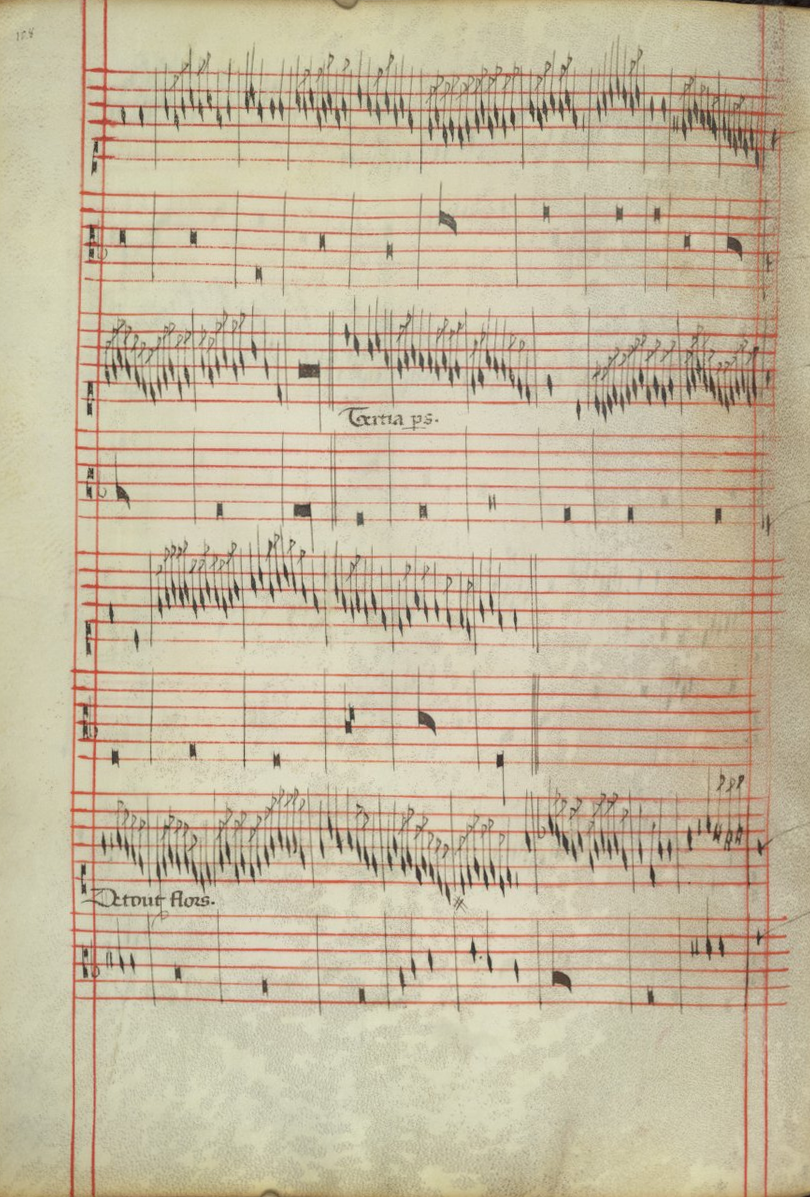Intabulation on:
[Wikipedia]
[Google]
[Amazon]
Intabulation, from the Italian word ''intavolatura'', refers to an arrangement of a vocal or ensemble piece for keyboard,
 Intabulation was a common practice in 14th–16th century keyboard and lute music. A direct effect of intabulation was one of the early advantages of keyboards, the ability to render multiple instruments' music on one instrument. The earliest intabulation is from the mid-14th century ''
Intabulation was a common practice in 14th–16th century keyboard and lute music. A direct effect of intabulation was one of the early advantages of keyboards, the ability to render multiple instruments' music on one instrument. The earliest intabulation is from the mid-14th century ''
lute
A lute ( or ) is any plucked string instrument with a neck and a deep round back enclosing a hollow cavity, usually with a sound hole or opening in the body. It may be either fretted or unfretted.
More specifically, the term "lute" can ref ...
, or other plucked string instrument, written in tablature.
History
 Intabulation was a common practice in 14th–16th century keyboard and lute music. A direct effect of intabulation was one of the early advantages of keyboards, the ability to render multiple instruments' music on one instrument. The earliest intabulation is from the mid-14th century ''
Intabulation was a common practice in 14th–16th century keyboard and lute music. A direct effect of intabulation was one of the early advantages of keyboards, the ability to render multiple instruments' music on one instrument. The earliest intabulation is from the mid-14th century ''Robertsbridge Codex __NOTOC__
The Robertsbridge Codex (1360) is a music manuscript of the 14th century. It contains the earliest surviving music written specifically for keyboard.
The term codex is somewhat misleading: the musical section of the source comprises onl ...
'', also one of the first sources of keyboard music still in existence. Some other early sources of intabulated music are the '' Faenza Codex'' and the Reina manuscripts (from the 14th century) and the ''Buxheim manuscript'' (from the 15th century). The ''Faenza manuscript'', the largest of these early manuscripts, written circa 1400, contains pieces written or transcribed in the 14th century, such as those by Francesco Landini and Guillaume de Machaut
Guillaume de Machaut (, ; also Machau and Machault; – April 1377) was a French composer and poet who was the central figure of the style in late medieval music. His dominance of the genre is such that modern musicologists use his death to ...
. More than half of its pieces are intabulations. The large ''Buxheim manuscript'' is dominated by intabulations, mainly of prominent composers of the time, including John Dunstaple, Gilles Binchois, Walter Frye, and Guillaume Dufay. The term "intabulation" continued to be popular through the 16th century, but fell out of use in the early 17th century, though the practice continued. The exception is the 16th- and 17th-century Italian keyboard pieces which included both vocal and instrumental music. Intabulations contain all the vocal lines of a polyphonic piece, for the most part, although they are sometimes combined or redistributed in order to work better on the instrument the intabulation is intended for, and idiomatic ornaments are sometimes added.
Intabulations are an important source of information for historically informed performance
Historically informed performance (also referred to as period performance, authentic performance, or HIP) is an approach to the performance of Western classical music, classical music, which aims to be faithful to the approach, manner and style of ...
because they show ornaments as they would have been played on various instruments, and they are a huge clue as to the actual performance of '' musica ficta'', since tablature shows where a musician places their fingers, which is less up to interpretation than certain staff notations.
References
{{Authority control Musical notation